You’re off on safari! You’ve done all the research, purchased the guide books, and the tickets are hot in your hand.
But most importantly, you’re getting ready to pack your ultra-light bag with everything you’ll need for your trip of a lifetime.
You’ve read all the advice you can handle (perhaps even this post on how to pack for safaris for your African bush adventure).
But when it comes down to the line, you still have no idea whether your favorite sweater is going to be a help or a hindrance, if you should pack jeans, how many pairs of socks are enough, and what on earth to expect once you are out in the wild.
What to wear on safari is something of a conundrum, the answer to which is entirely dependent on whether you are a complete slave to fashion and constantly worry about your appearance.
Or whether you don’t care if your trousers absolutely match your shirt and if your shoes co-ordinate properly with your camera bag.
So, in a bid to help sort the wheat from the chaff when it comes to safari style, this guide aims to highlight the best safari clothing brands and tips for your next trip to Africa.
African Safari Clothes: 7 Useful Tips
The African savanna has seen virtually every take on both the best and worst dressed safari goers, including some of the most practical and impractical safari gear around.
This includes everything from haute couture animal prints hot off the Milan catwalk, to Prada stilettos getting stuck in between the slats of wooden decks, and $300 silk scarves ripped to shreds by thorn bushes.
There are also tales of wild baboons getting hold of Victoria’s Secret lingerie and leaving it draped for all to see high in the branches of an acacia tree.
There are plenty of stories about complete wardrobe disasters—but to ensure you’re not one of them, here is a list of useful tips on how to dress for safaris.
1. Leave the luxury safari clothing at home
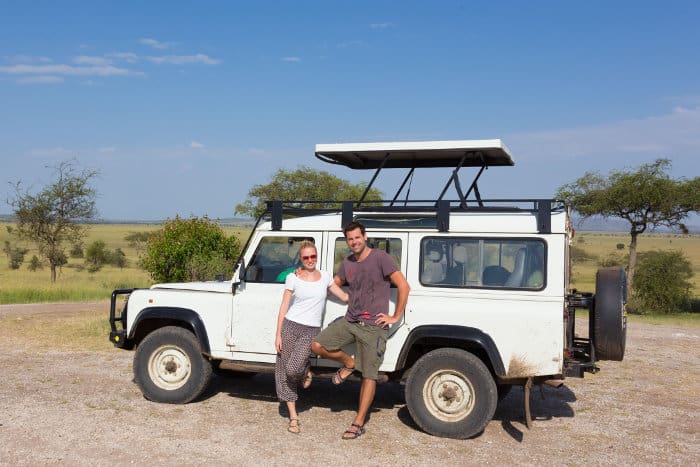
Lesson 1 in safari style is to NEVER take your best clothes into the bush.
If you find a pair of shorts, trousers, or a top you love and know that it would break your heart to have it ruined on safari, it’s probably best to leave it at home.
Instead, look for clothing that is specifically suited for the wild. And if the item comes in different colors, buy the range!
This way, over the years, you’ll acquire a variety of clothes which come everywhere with you. Look out for clothes that you can team together to create practical yet stylish outfits.
2. Keep your clothes for safari simple
Lesson 2 is learning how many of each item you will need. As a rule of thumb, always go with four of the basics.
Four pairs of shorts, four pairs of cut-off pants, four string vests, four t-shirts, four pairs of long pants, four button-through shirts (two of which are long-sleeved), four sets of underwear, four pairs of socks… you get the drift, I am sure!
When traveling in winter or during the colder months of the year, add to this scenario two lightweight long-sleeve t-shirts and two knitted sweaters, plus two fleeces or warm jackets, thermal long johns, gloves, a scarf, and a beanie.
When considering your safari apparel, ALWAYS pack a swimsuit and a couple of sarongs/kikoys. Even in the winter, it’s usually warm enough to suntan during the day and sometimes even swim.
3. Your safari wear should include comfortable shoes
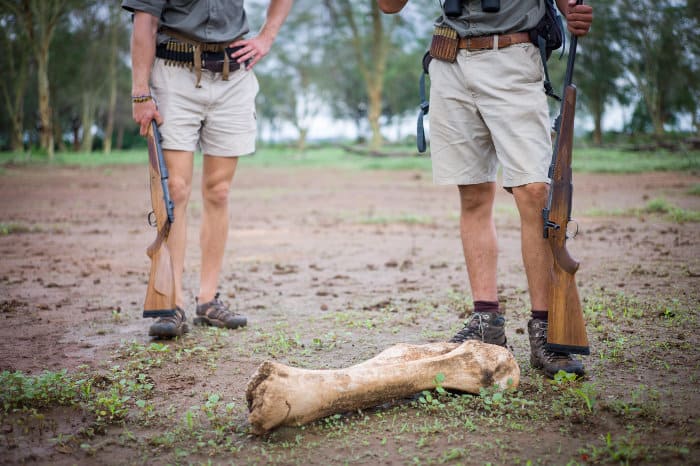
Lesson 3 concerns footwear. In the heat of the summer, it is best to pack at least two pairs of “bush slops” – flip flops (thongs) which are heavy-duty, waterproof, and good enough to handle walking in the light bush for game drives.
You may also need two or three pairs of fashionable flip-flops or sandals for around camp and evening meals, and a pair of good walking shoes (Merrells or Jim Green boots) for walking safaris.
In the winter, replace the walking shoes with walking boots and add a pair of lightweight faux-fur lined “trendy” flat boots for evening wear.
4. Safari fashion: accessories
Accessorize – that’s the key to lesson 4 – it’s the difference between a good safari wardrobe and a bad one. Two or three lightweight colored scarves and/or wraps are a must in any safari bag.
Usually, they have beadwork or applique of some description on them. These are useful for dressing up even the most conservative safari outfit—great if you’re looking to add a dash of glamor to your evening meals. Team them up with a couple of great “ethnic” bead necklaces and earrings.
Another essential item to include with your safari attire is a hat—and these can most certainly be fun. Pack in a couple of lightweight, floppy straw sun-hats, as these are great for game drives or tiger fishing.
Another good option is the usual peak baseball-style caps.
5. What to wear on safari – quality
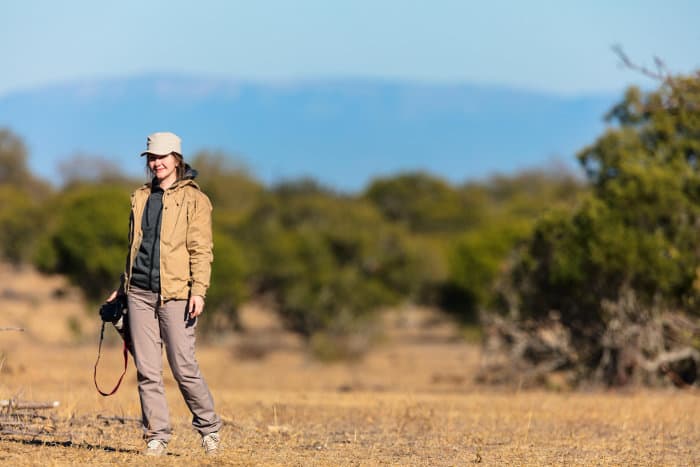
Lesson 5 is all about quality. Everything you take into the bush with you needs to stand the test of time.
This includes the elements of the African wild, the rigors of hand-washing, and bumping and grinding in the back of a safari vehicle halfway across Africa.
So it’s important to check your clothes before you pack to make sure they can be hand-washed, aren’t going to fall apart the first time you wear them, and are not likely to fade too drastically when hung in the sun to dry.
The material of your clothing is also important. When out in the wild, it is best to stick to strong natural materials like hemp, linen, leather, and wool.
Nylon and polyester also tend to provide adequate protection against the elements.
6. Best safari clothing brands
Wondering where to buy safari clothes? Most of the high-street fashion chains carry good quality fashionable safari clothes which will stand up to the average safari conditions.
As such, you may be able to avoid the need to go to specialist outfitters and camping/outdoor stores where things tend to cost a lot more.
And, of course, the big brands like Jeep (a favorite with safari goers because their clothes are practical, hard-wearing, and pretty at the same time) and Cat always have some great clothes for safaris—including some of the best safari shirts.
In addition to these, here are several more reliable brands to consider when buying safari clothes:
- Columbia — this is a good option for those seeking affordable safari clothing that is still good quality.
- First Ascent — if you’re buying safari clothes in South Africa, keep an eye out for this brand as it offers some excellent quality clothing.
- Patagonia — while the brand is more expensive, they provide some of the highest quality outdoor clothing and gear on the market.
- REI — if you’re shopping online, REI is often the go-to for outdoor gear. Their house brand is affordable and offers many items that will serve you well on your safari.
- Ruggedwear — proudly South African, it is an official partner of the Field Guides Association of Southern Africa (FGASA).
- Sapmok — footwear for every adventure. Comfy. Durable. And stylish.
7. What color clothing for African safaris

Finally, lesson 7 concerns white. Do you take white clothes into the bush with you? Hell yes.
As long as you don’t expect them to remain white for long and can accept the fact that no matter where you wear them, they’re bound to get a little dirty. It’s more or less a bush essential in my book because it reflects sunlight, keeps you cool and goes with everything.
Everyone says, “don’t wear white on a safari vehicle,” – but this is far from the truth. However, white isn’t the only color that’s good for safaris.
When dressing for safaris, the basic color range is simple: khaki, beige, white, and brown (or variations thereof).
Avoid black and blue during the day because they attract tsetse flies.
But do occasionally take these colors for evening wear when the tsetses have gone to bed.
What to Wear on an African Safari: Checklist
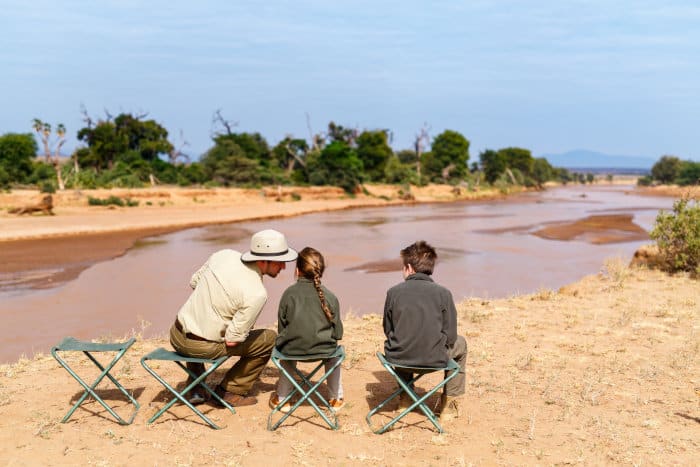
Now that you’re all clued up with what to consider when deciding what clothes to wear on a safari, it’s time to pack.
Here’s a checklist to ensure you don’t miss anything.
Africa safari clothing list
Below are some of the most essential pieces of clothing to bring along on a safari:
- 4 safari shirts
- 4 casual t-shirts or vests
- 4 safari pants or shorts
- 4 pairs of blister-proof socks for safari walks
- 3 pairs of pajamas
- 2 warm fleece tops or jackets (good for a summer or winter safari outfit)
- 2 pairs of flip-flops or sandals (one for the wild and one for at the lodge)
- 2 safari dresses (for at the lodge)
- 2 swimming costumes
- 1 waterproof jacket
- 1 kikoy or sarong
- 1 wide-brim hat or baseball cap
- 1 beanie
- 1 pair of safari shoes or boots
- underwear
Safari gear and accessories list
In addition to clothing, you should include the following items when packing for a safari:
- 4 pairs of anti-chafing tights (good for walking safaris)
- 2 pairs of garden gloves (useful for gorilla trekking safaris)
- 2 pairs of ankle gaiters
- 1 pair of sunglasses
- 1 bottle of sunscreen
- 1 safari belt
Start Packing Your African Safari Clothing
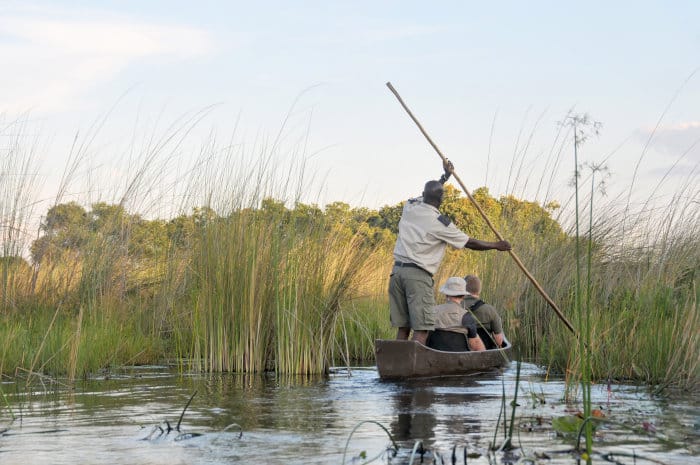
There’s nothing quite like getting down and dirty on an African safari. Whether you’re going on a game drive or a walking safari, you’re sure to come in contact with the various elements of the wild—and not to mention the wildlife, too.
For this reason, having the correct clothing is important. This will protect you during excursions and allow you to blend in better with the natural environment.
So next time you’re contemplating what to wear on African safaris, review the list above. These useful tips will guarantee you have a pleasant experience, both at the lodge and in the bush.
So what are you waiting for? Check out these incredible African safari deals and start packing!




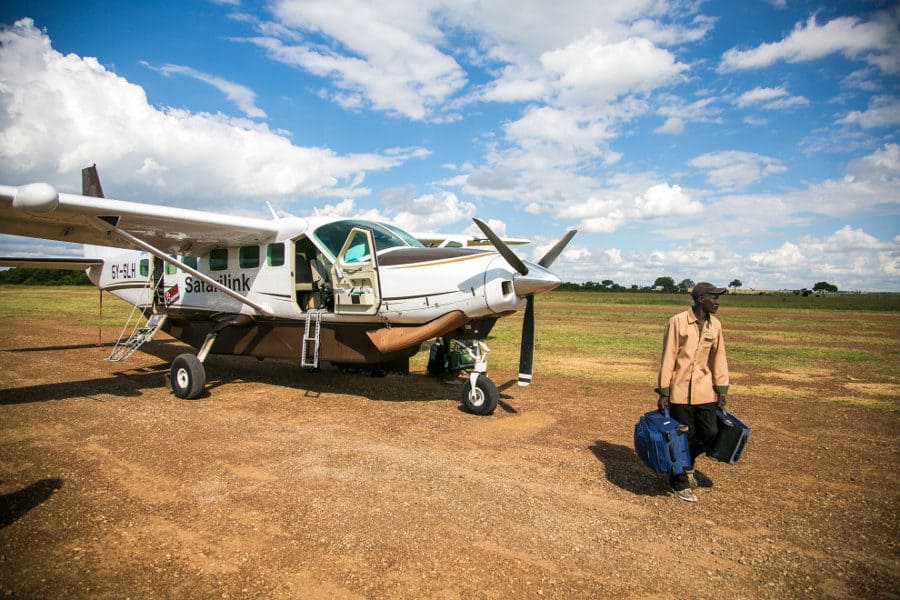
One last packing item. Pack your clothes in a soft bag. No hard cases, no wheels. Your driver and guide will love you for it when packing your safari vehicle.
Thanks Mike.
Indeed, soft bags such as duffels are highly recommended.
You can find all about some of the best safari luggage here:
https://africafreak.com/safari-luggage